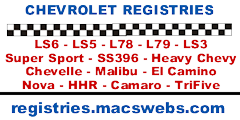1967 SS 396
|
|
|
|
|
|
|
|
|
The 1967 SS 396 was available in both sport coupe (17) and convertible (67) models and the 396 cid Mark-IV engine was the base engine. The Fisher Body style numbers 13817 & 13867 and VINs beginning with 13817 & 13867 will note an SS 396. As with all years of Super Sports, the VIN only depicts the base engine and does not indicate any optional engine. The base 396 engine was the (L35) 325hp engine with two optional 396 engines, a L34 350hp version and a L78 375hp version.
Although the El Camino could be ordered with any 396 engine, there are no SS 396 1967 El Caminos; no SS 396 badging, no Super Sport hood and no SS 396 rocker panel moldings. A 396-optioned El Camino would have the 396 Turbo-Jet flags on the front fender however. The dash also retained the appropriate (13480 or 13680) upper dash strip and not the black crinkle-finish of the SS 396.
Instrument Panel
Contrary to what many think, bucket seats, gauges, and 4-speeds were not standard equipment. A vinyl front bench seat, no gauges (except speedometer, clock, and fuel gauge), and a 3-speed heavy duty, floor shifted, Borg-Warner transmission were standard with the SS 396.
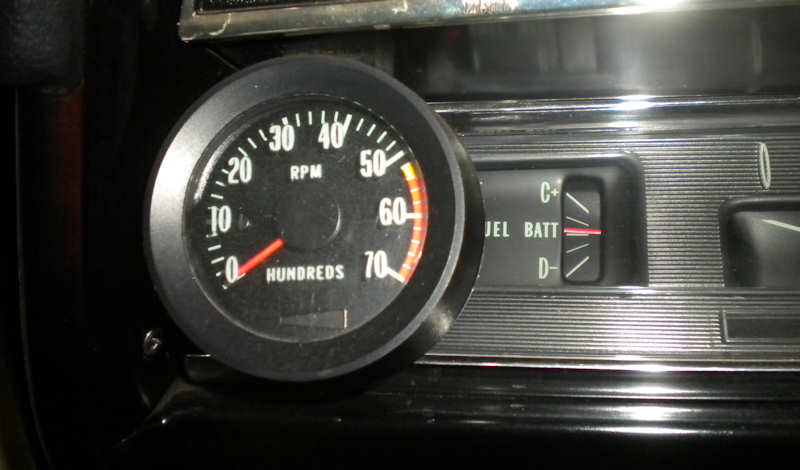
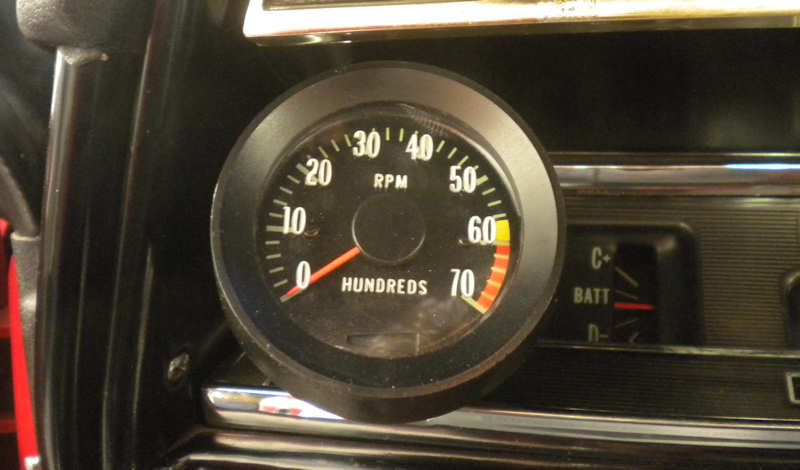
RPO U14 Special Instrumentation was optional on all V8 Malibu and SS
396 Chevelle sport coupes, convertibles, and El Caminos. RPO U14 was
no longer available with the I6 engine. This option included tachometer,
mechanical oil pressure gauge, electric amp gauge (labeled BATT) and
electric water temperature gauge. The tachometer could be ordered
without the gauges under RPO U16 on any V8 Chevelle series. These are
NOT "SS gauges." The only difference between RPO U14 for the
SS 396 was the redline for the L34 and L35 396-cid engines.

Two versions were available in the SS 396 series, a 0-7000 RPM range
with the redline at 5400 for both the base 396/325hp and the optional
L34 396/350hp (#6468499) and a 0-7000 RPM range with the redline at
6000 for the L78 396/375hp engine (#6468500). A third 0-7000 RPM
range with the redline at 5000 could be ordered with any 283 or 327
engine. The L79 327/325hp engine got the same redline (6000) as the
L78.
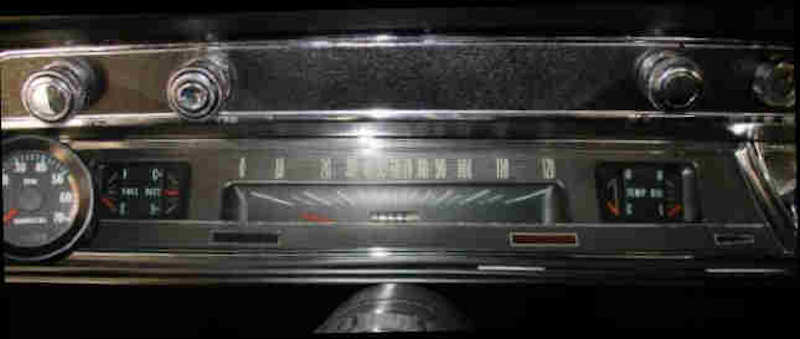
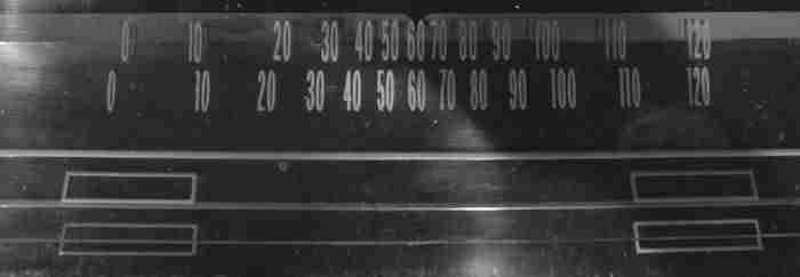
Be careful when ordering a replacement lens; the 1967 (top photo) and 1966 (bottom photo) are different.
Steering Wheels
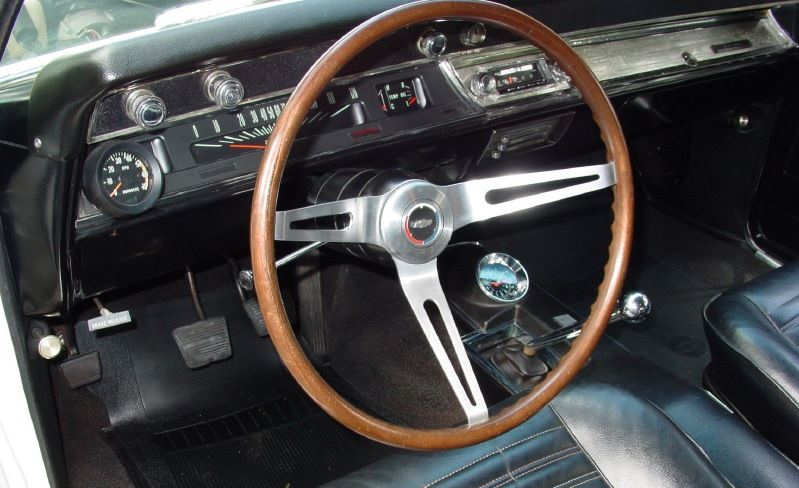
Optional RPO N34 wood-grain steering wheel was optional with any
Chevelle.
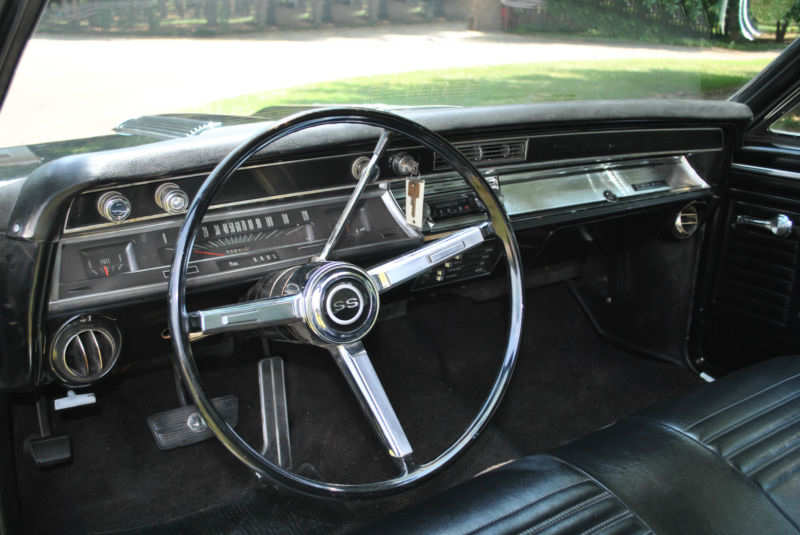
The standard steering wheel for the SS 396 is a 3-spoke design with an "SS" center emblem. The SS 396 steering wheel has two additional horn button contacts on either horizontal section where the 300 Deluxe series steering wheel (below) does not. A "SUPER SPORT" emblem is located on he bright panel above the glove box. This SS 396 is also optioned with RPO C60 air conditioning as noted by the vent cutout in the center of the dash strip.
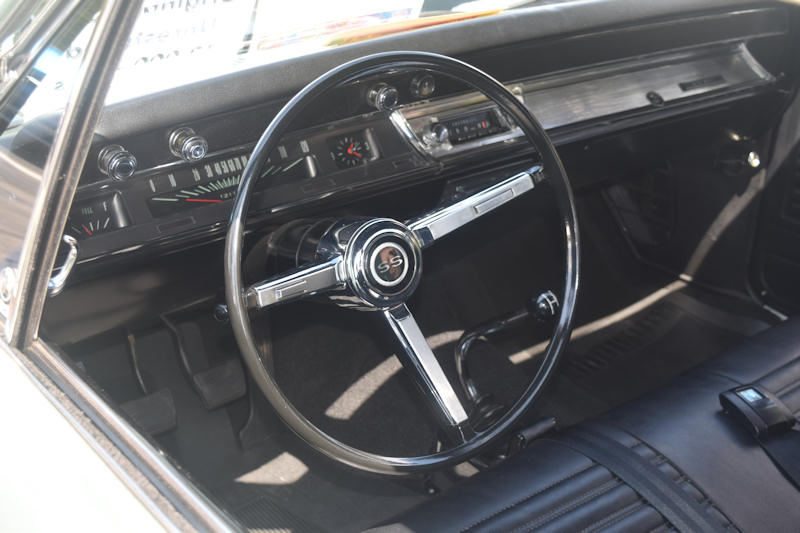
The base transmisison for all SS396s is a floor-shifted Borg-Warner
3-speed. All other transmissions were optional.
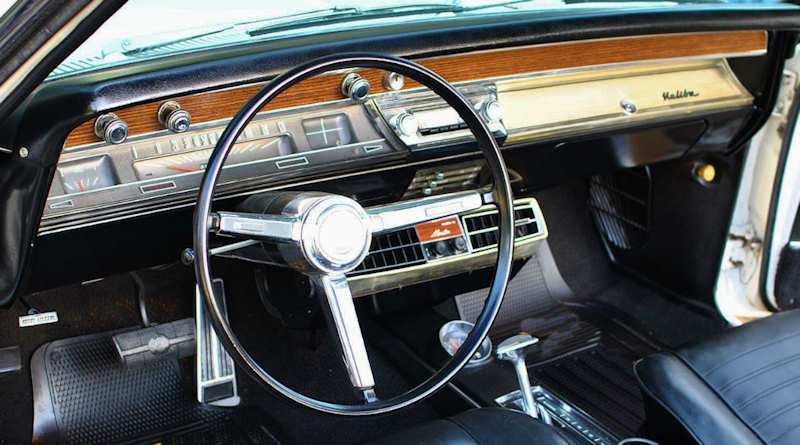
The Malibu series dash has a faux woodgrain dash strip, the same 3-spoke
steering wheel as the SS 396 with the exception of the center horn button
with "CHEVELLE" instead of "SS." The bright panel
above the glove box has a "Malibu" script. Shown
here with aftermarket air conditioner. Also note when a center console
was ordered whether on an SS 396 or Malibu, the clock in the dash was
moved to the console.
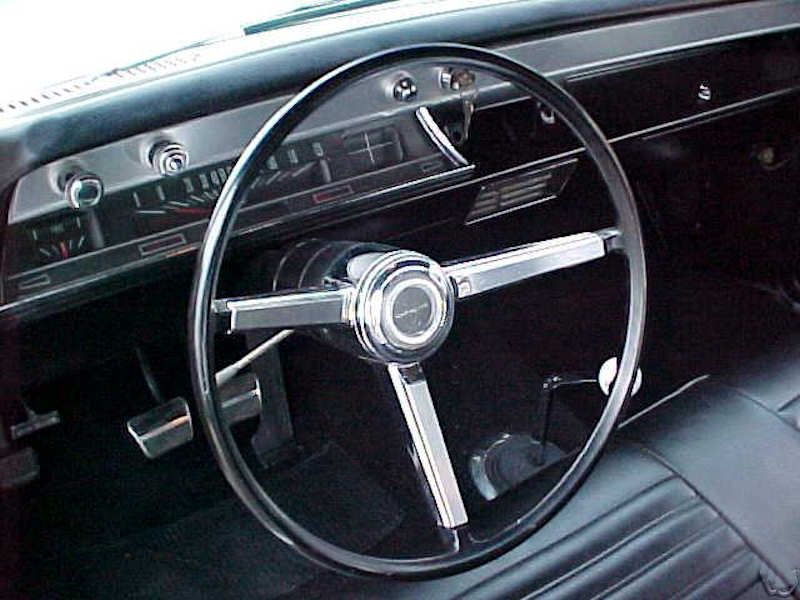
The 300 Deluxe series Chevelle has a silver dash strip and a 3-spoke
steering wheel with "CHEVELLE" center emblem. Note lack of
trim above the glove box.
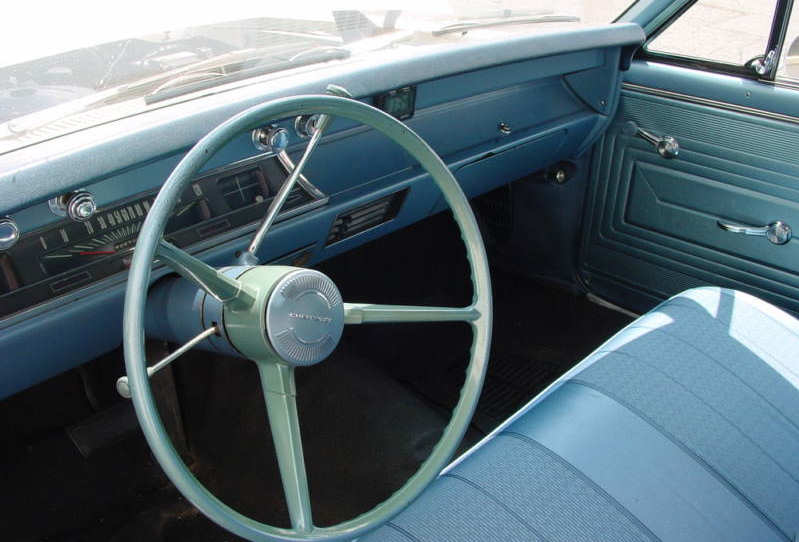
The 300 series Chevelles have a stark 3-spoke steering wheel that is
color-matched to the interior (as all standard steering wheels were
regardless of series) with a single center horn button. The
dash is void of any dash strip and, like the 300 Deluxe, no bright panel
above the glove box. This example was also ordered without a radio so
the radio hole cover is metal and color-matched to the dash. This often
misnamed as 'radio delete' but you cannon 'delete' an option. If 'radio
delete' were to be correct, so would 'air conditioning delete' or 'wheel
cover delete' if those options were not ordered.
Grille Assembly
Distinctive blacked out grille, Super Sport trim, a special SS 396 hood with faux twin scoops, SS 396 emblems on the grille and rear cove, Super Sport script on the rear quarter panels, and ribbed rocker panel moldings.
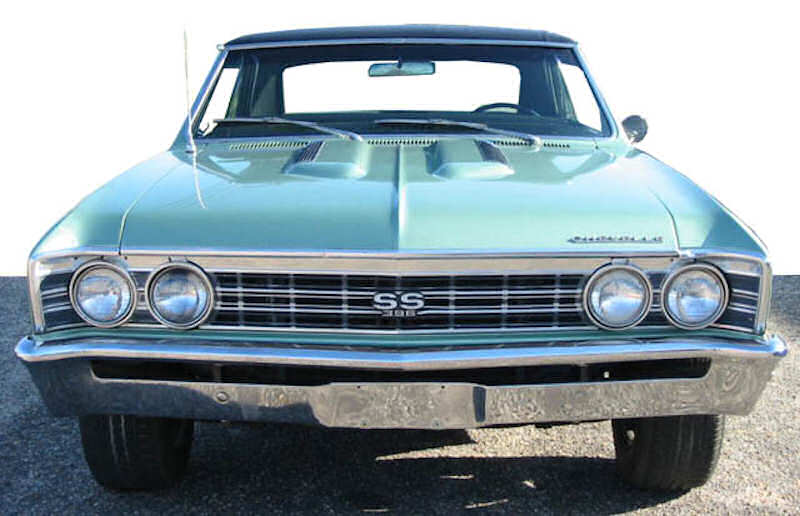
Note special SS 396 hood with twin faux scoops, blacked-out grille with
SS 396 emblem, blacked-out headlamp bezels, and blacked-put grille extensions.
Also note the two horizontal bright bars left in the grille, headlamp
bezels, and grille extensions as well as the grille cutouts at either
end next to the headlamp bezels. The 300, 300 Deluxe, and Malibu grilles
were also blacked-out but had more bright horizontal bars and the two
extensions next to the headlamp bezels were filled in as noted on the
Malibu below as well as a different grille emblem.
Three different center grille assemblies were used in 1967.
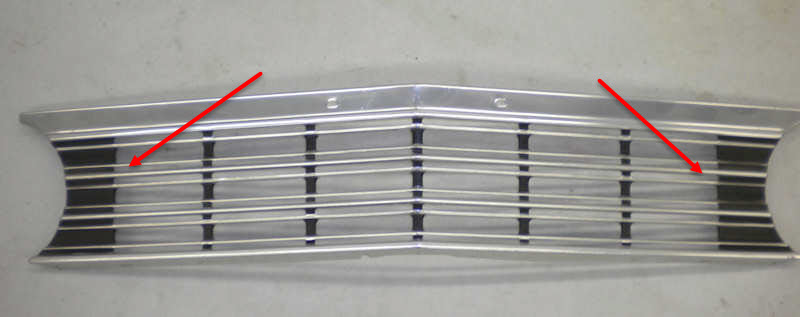
The 300, 300 Deluxe, and Malibu series has two rows of three bright
horizontal bars and note the ends (arrows) are solid metal and there
are two mounting holes for the emblem.
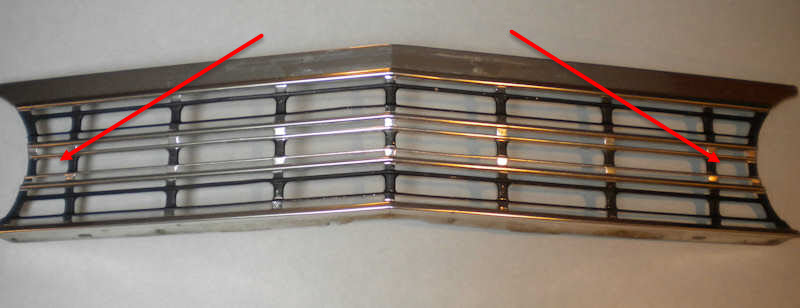
The SS 396 has two rows of two bright horizontal bars and the ends (arrows)
are cut out. Also note there are no holes in the upper-most bar for
an emblem; an SS 396 emblem was centered in the grille instead.
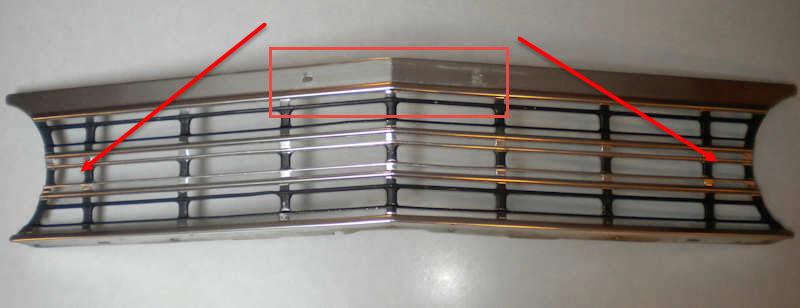
The third center grille is sort of a combination of the other two and
was unique to the 13735/13835 Concours statin wagon. The Concours station
wagon has the same center grille as the SS 396 with the addition of
the two holes in the upper-most bar for the emblem.
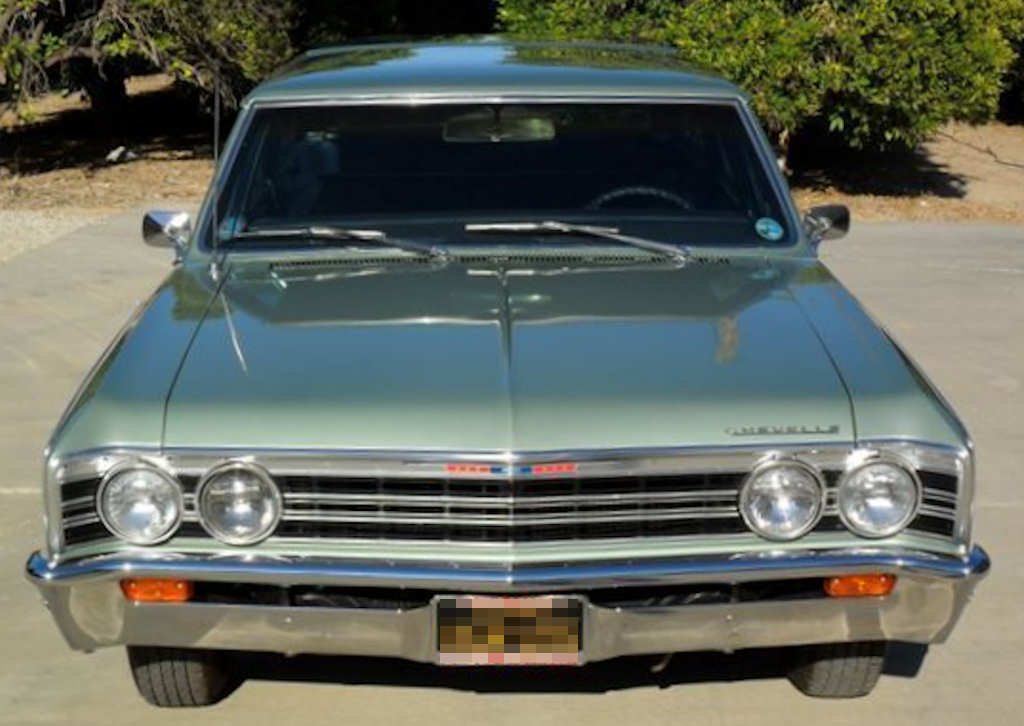
13835 Concours station wagon
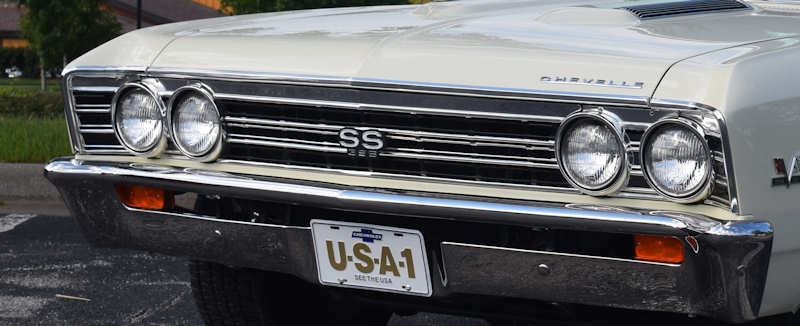
The headlamp bezels and grille extensions carried the same two rows
of bright horizontal bars on the SS 396 and Concours wagon. Front
(and rear) bumper guards were optional.
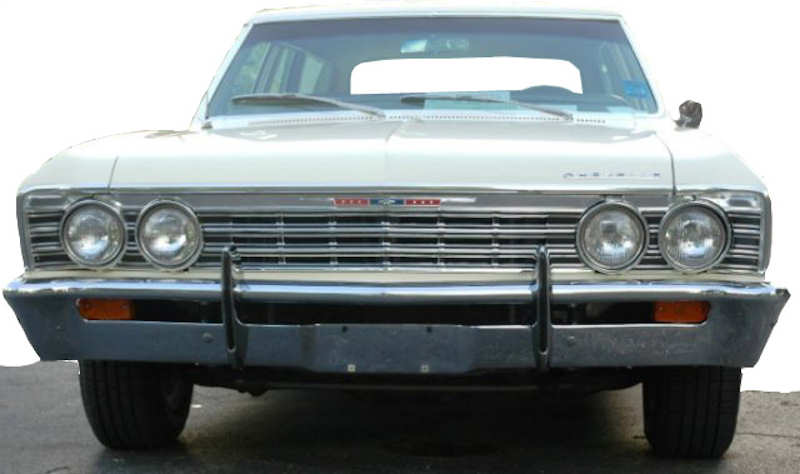
Chevelle 300, 300 Deluxe, and Malibu grille assembly with two rows of three bright horizontal bars.
Tail Pan
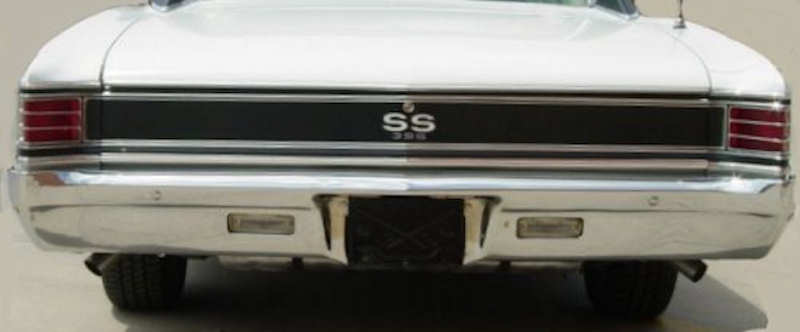
Unlike the controversy over the blacked-out rear cove on 1966 SS 396
Chevelles, all 1967 SS 396 Chevelles had this feature. The SS 396 emblem
is centered in the rear cove.
Side Stripes
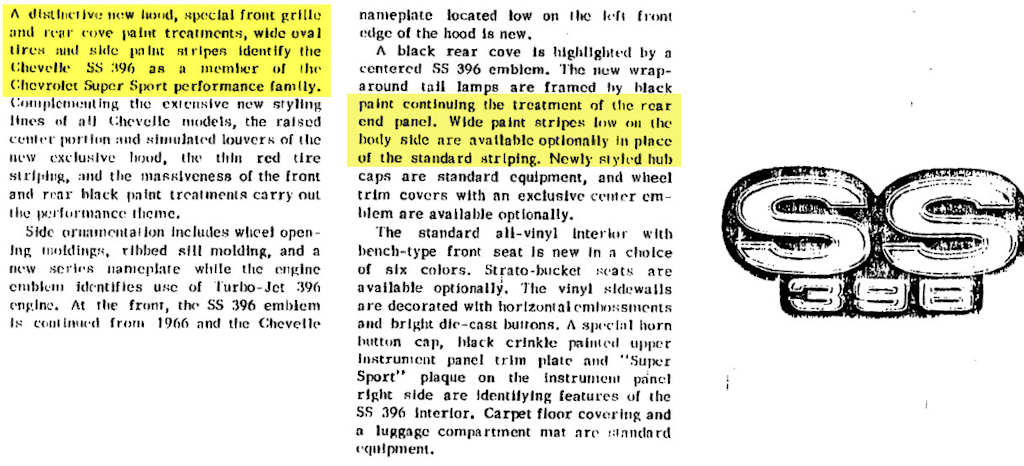
Although the brochure says the stripes (both standard and optional
wide) were painted, all originals found to date are decals.
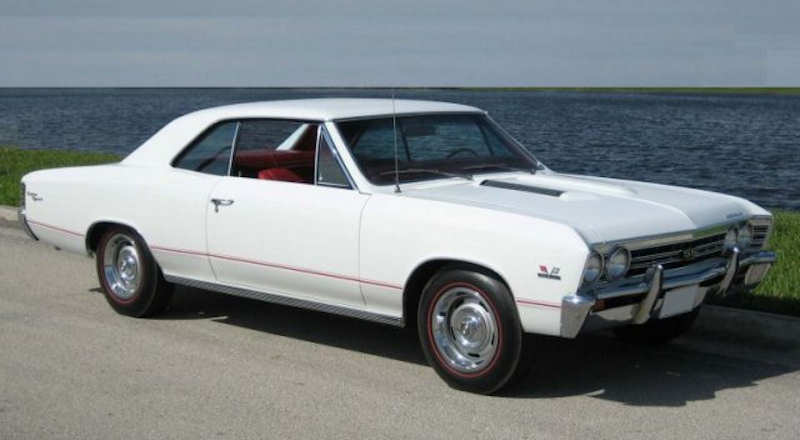
A ribbed rocker molding remained but the piece behind the fender well
from 1966 was eliminated. The SS 396 Turbo-Jet flags remained on the
front fender but the Super Sport script on the rear quarter panels was
now split on two lines instead of one. Also new for 1967 were
disc brakes, although not limited to the SS 396 series, requiring the
rally wheels shown here. These wheels were part of the disc brake option
and not available separately as an option. The side stripes shown were
standard fare for the SS 396. Many owners removed these vinyl stripes
soon after taking delivery or when they began to loosen and peel.
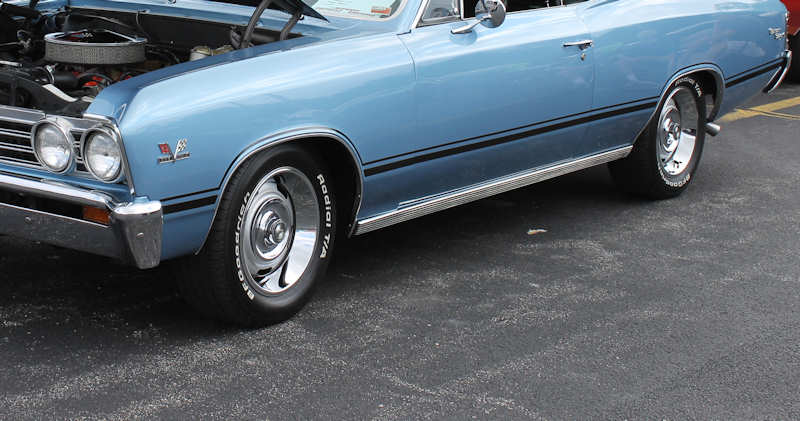
Optional on the SS 396 were the D96 sport stripes that included a larger
lower stripe and stripes over the wheel wells.
Hub Caps & Full Wheel Covers
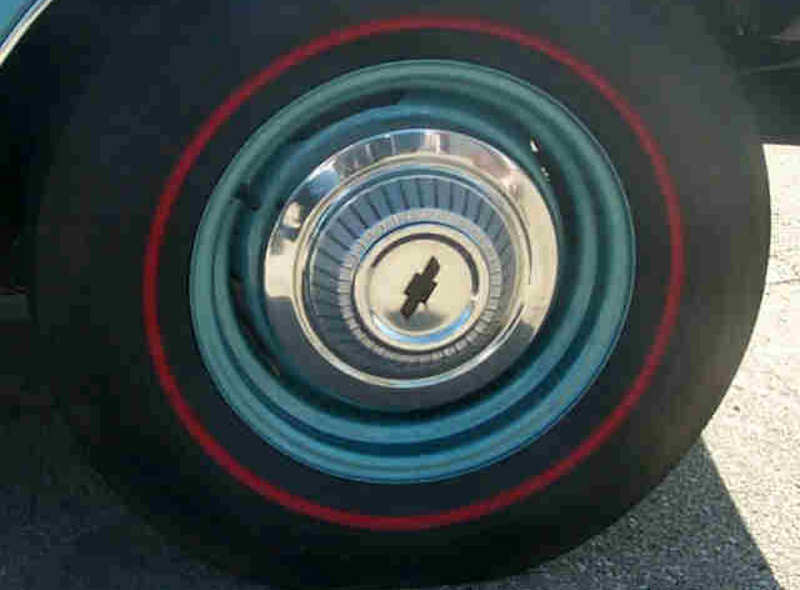
The SS 396 came standard with steel wheels, redline tires, and hub caps.
When no optional wheel covers were ordered, the wheel was painted the
lower body color.
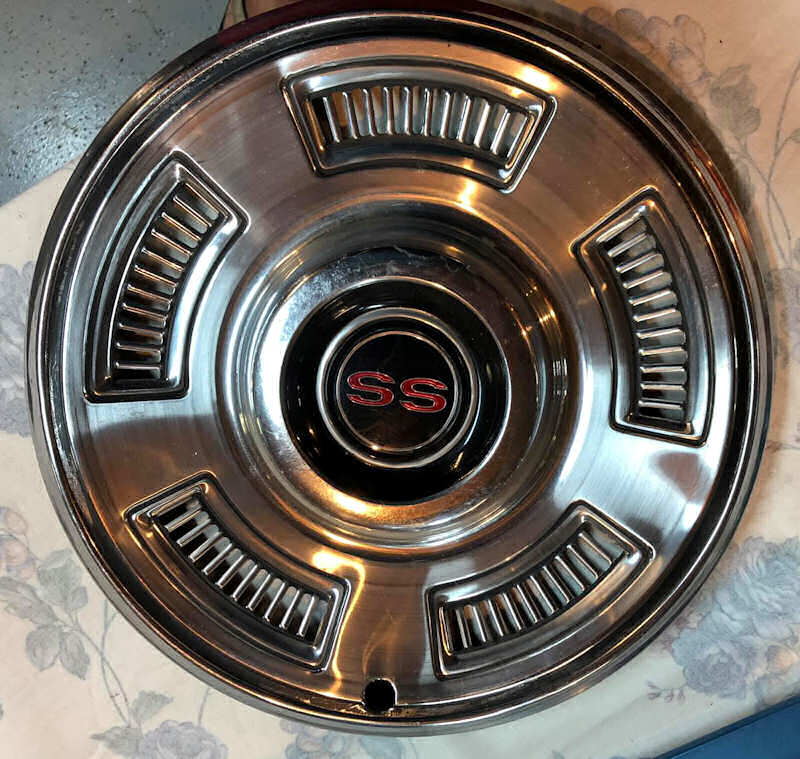
When optional RPO P01 wheel covers were ordered, the center section
has an "SS" emblem.
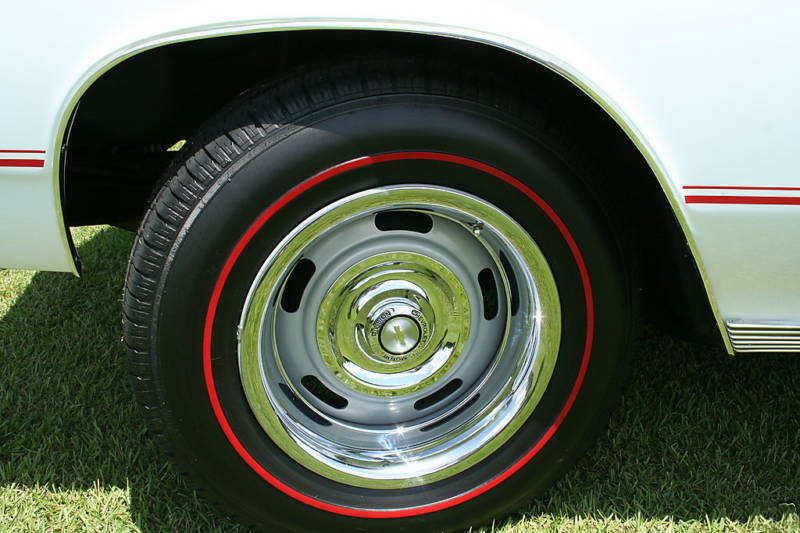
When RPO J52 disc brakes were ordered, special slotted wheels with
bright trim ring and center cap were part of the option. Disc brakes
could be ordered with any series Chevelle in 1967. When ordered on
an SS 396, the wheels were 14x6, when ordered on any other series
Chevelle the wheels were 14x5. The wheels were not an option by
themselves but could be purchased at any dealership
'over-the-counter.' Shown here on an SS 396 with standard F70x14
red-stripe tires.
Frame Reinforcements
Canada produced a Malibu SS in early 1967. This was a standard 135/136xx Malibu with a special package called The Sports Option. This Malibu SS continued to use the Malibu SS quarter panel trim from the 1965 Malibu SS but could be ordered with any available engine. It wasn't until January that the Canadian market saw a true SS 396. See The Obscure Malibu SS of 1966/67 for more specifics on this Canadian option.
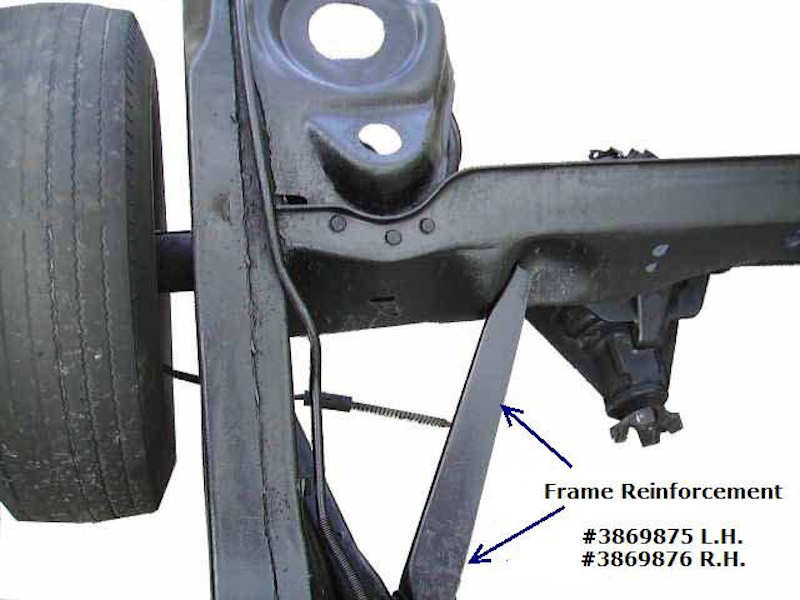
All SS 396 Chevelles came with a 12-bolt rear end but Positraction was
still an option; an open rear end was standard. However, a 12-bolt rear
end, as well as Positraction, was available on non-SS 396 Chevelles
as well so the presence of a 12-bolt (with or without Positraction)
is not an indication of a 1967 SS 396 Chevelle. All SS 396 Chevelles
also came with rear frame reinforcements but could easily be added to
any Malibu coupe or convertible.
Model & Production Week Stamping
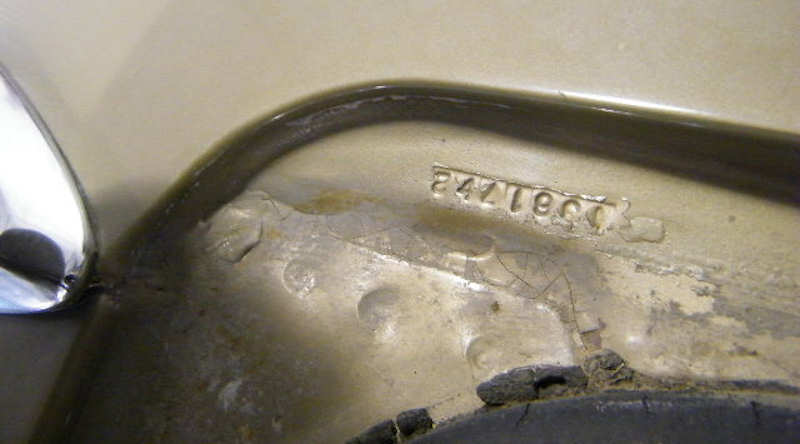

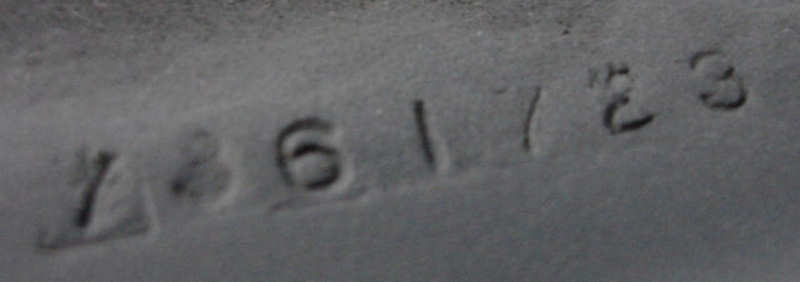
Found along the inner lip of the rear quarter panel, not actually a partial VIN but believed to be associated with the series/model ID due to differences between the Malibu and SS 396 rear quarter panel piercing for emblem placement. This stamped number is located on the right rear quarter panel where the trunk lid meets the body next to the weather stripping material. While both 136xxxx stampings have been found on SS and non-SS Chevelles and 138xxxx stampings have been found on SS and non-SS Chevelles, those cases are rare and could be attributed to many things such as panel replacement from another Chevelle. The series/model identification is followed by another 2-digit number. These two digits indicate the calendar week the panel was stamped. (Courtesy Jeff Helms) Note in the top example these numbers were not always placed in the stamping die correctly; the "4" and the "2" are upside down.
Caveat: Numerous original cars have been reported with the 'wrong' 136xx vs. 138xx stamping. Whether this was due to poor quality control, inattention by the workers, or panels stacked in the wrong location is not known.
Rear Tail Pan and Trunk Paint
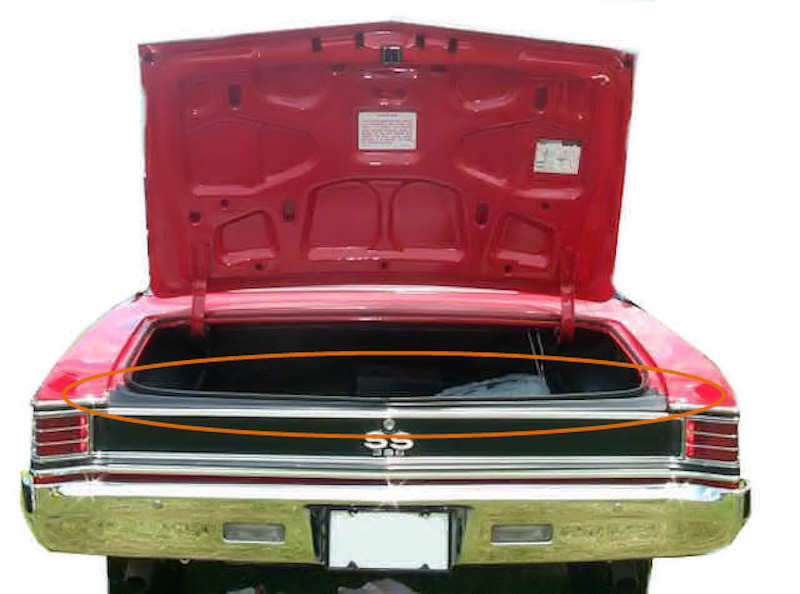
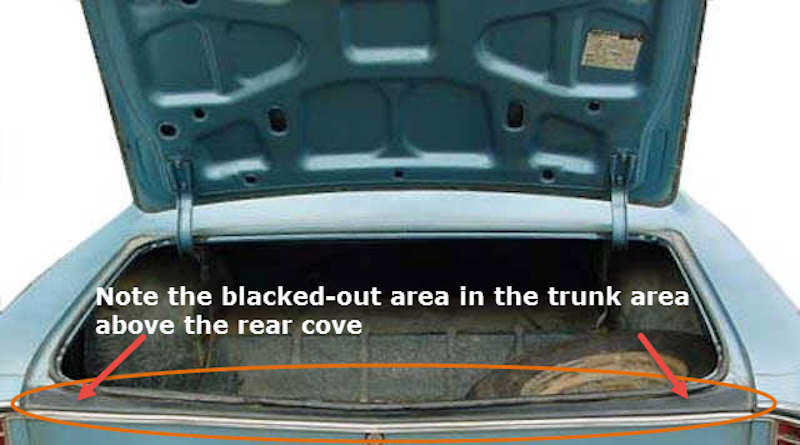
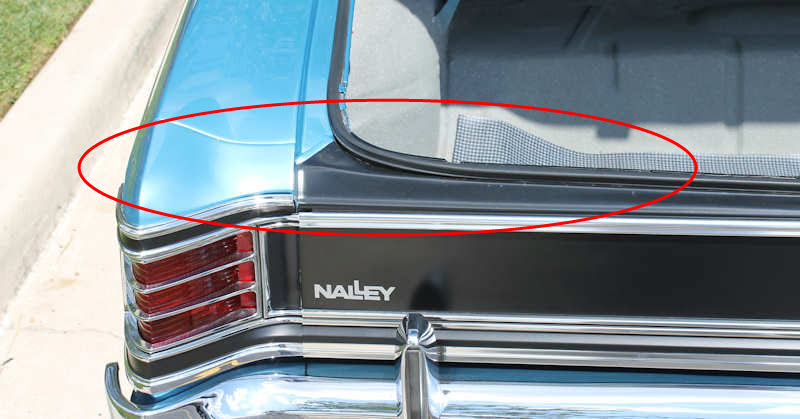
Both the Malibu and SS 396 got a black-out treatment on the area just
above the rear cove in the trunk. This was done to continue the black
of the tail lamp housings. Assembly plants often varied in how this
area in the trunk was painted and were not consistent throughout the
year. The three variations are (1) following the weld seam like the
top example above, (2) horizontal across the area like the 2nd example
above, and (3) a 45º angle like the bottom example.
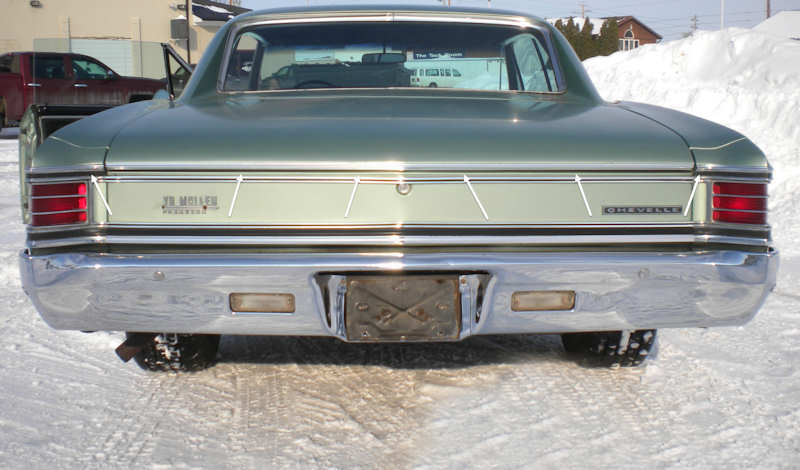
The purpose of this blacked out area was to continue the 'black' theme
found on the upper part of the tail lamp housings. Without this black-out
process, the rear panel seems 'unfinished.'
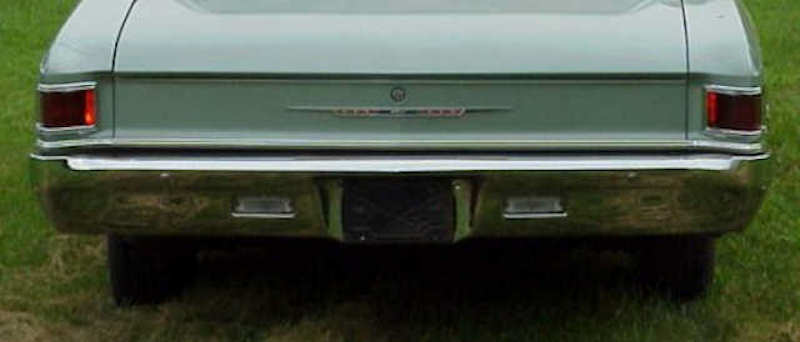
The 300 series and the 300 Deluxe series did not get this black-out
treatment since the tail lamp housings were much different.
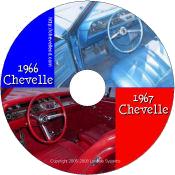
Want more in-depth information on 1966/1967 Chevelles? Try my
1966/1967 Chevelle
Reference CD.
© ChevelleWorld

 1964 Chevelle
1964 Chevelle 1965 Chevelle
1965 Chevelle 1966 Chevelle
1966 Chevelle 1967 Chevelle
1967 Chevelle 1968 Chevelle
1968 Chevelle 1969 Chevelle
1969 Chevelle 1970 Chevelle
1970 Chevelle 1971 Chevelle
1971 Chevelle 1972 Chevelle
1972 Chevelle








